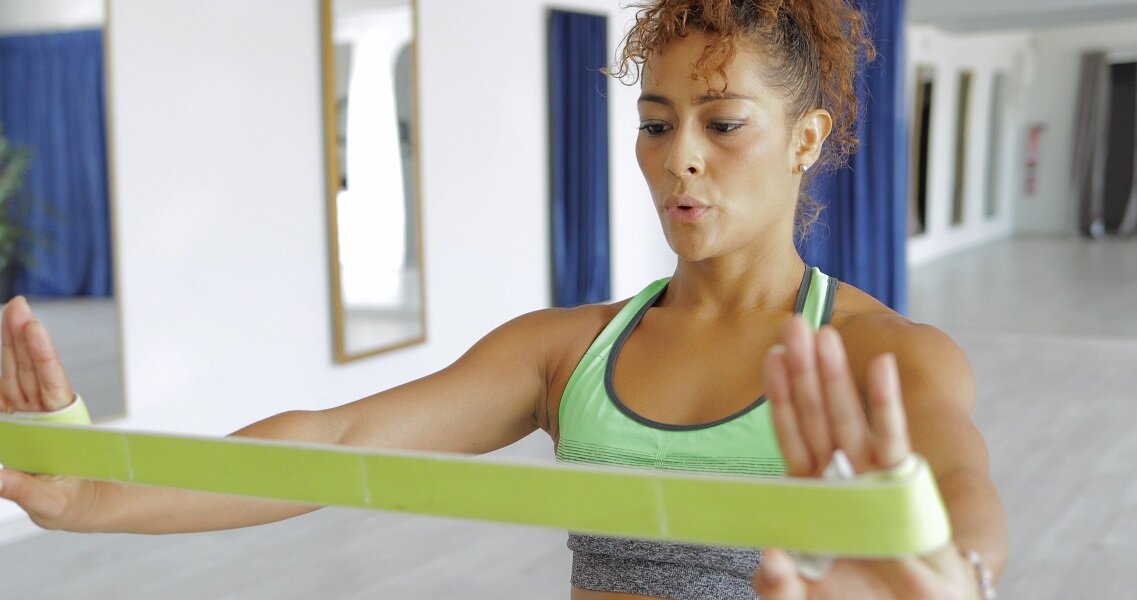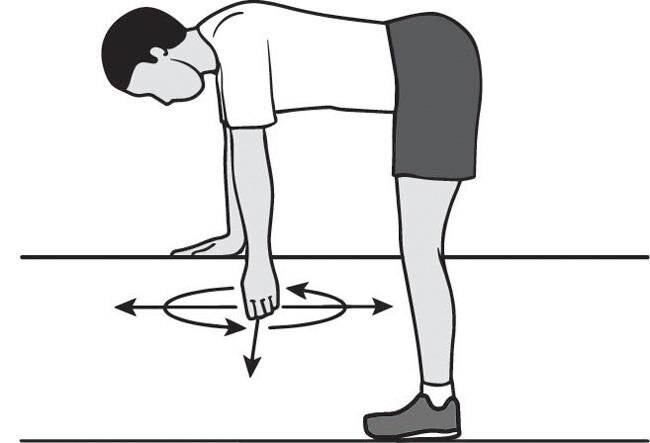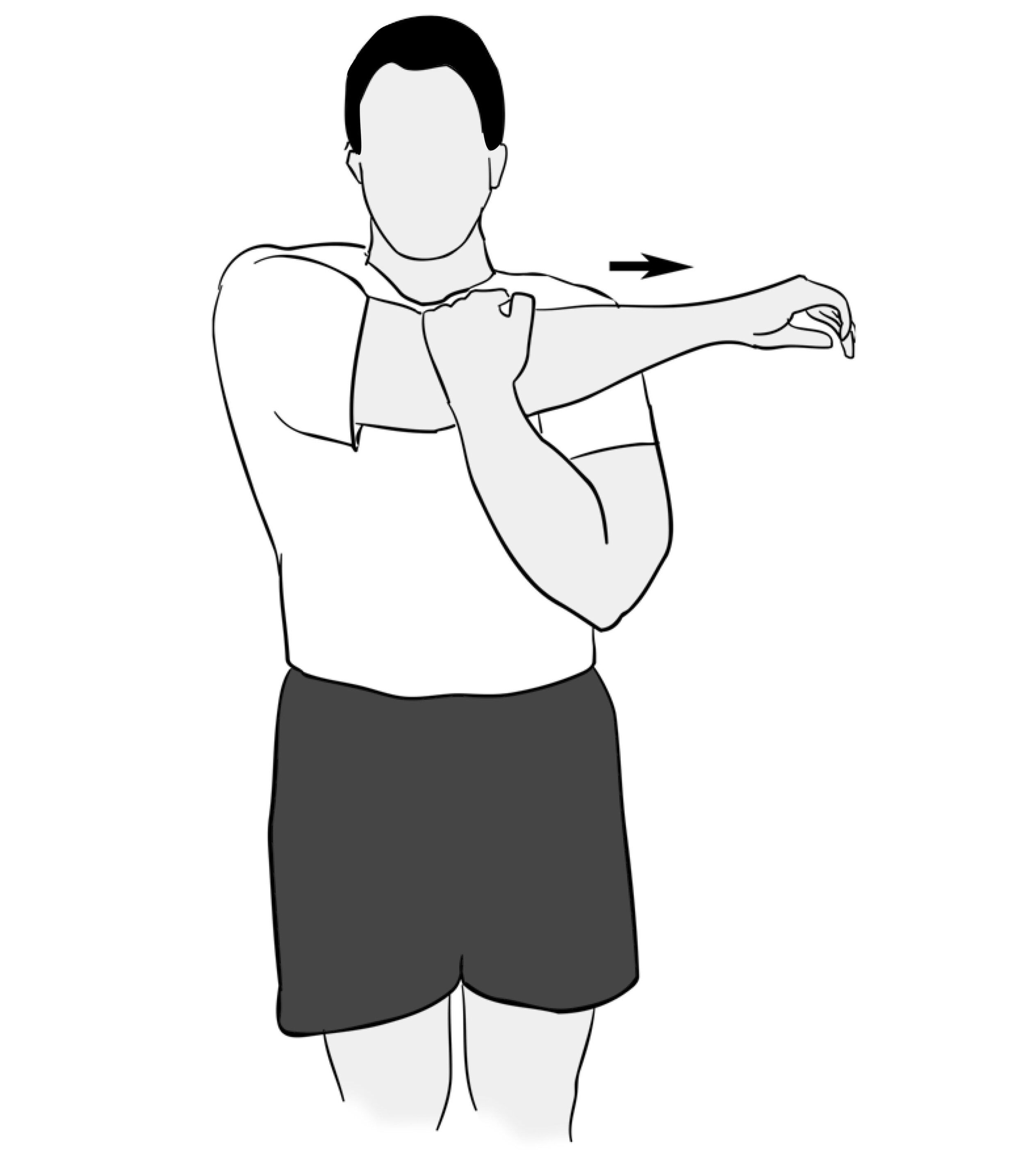Top Rotator Cuff Exercises & Stretches for Strengthening
What is the Rotator Cuff?
The Rotator cuff is the collective term used for the group of four muscles and their tendons, which assist in providing strength and stability to your shoulder during its movement. These four muscles are the supraspinatus, infraspinatus, subscapularis and the teres minor. These arise from your scapula and connect to the humeral head, forming a cuff around your glenohumeral joint.
What are the functions of the rotator cuff muscles?
Your rotator cuff muscles work in tandem for executing a variety of upper extremity movements, which may include flexion, abduction, internal and external rotation. They play an important role in any shoulder-related movement and are essential in providing stability to your shoulder joint while assisting in keeping the head of your humerus within the small glenoid fossa of the scapula. Dysfunction of the rotator cuff group of muscles can lead to shoulder pain and discomfort, reduced or impaired functional capacities, and may also affect your activities of daily living and negatively impact your quality of life.
What are the common injuries to the rotator cuff group of muscles?
Due to the extensive use/overuse of the rotator cuff muscles, injuries are quite common and can occur at any age. In youngsters, most of the rotator cuff injuries occur secondary to trauma or from overuse caused by overhead activities, like playing baseball, basketball, tennis, volleyball, etc. As you grow older, your rotator cuff muscles may show signs of degeneration, impingement and tears. If your biomechanics are poor and if you suffer from postural dysfunctions, your rotator cuff muscles and tendons may undergo repetitive strains and stress and you may suffer from any of the following common injuries:
Rotator cuff tear, partial or full-thickness – These are tears experienced in the group of muscles and tendons, with the most common tear involving your supraspinatus muscle. Rotator cuff tears are the leading cause of shoulder instability and pain and can be caused by repetitive micro traumas, degenerative changes and also from traumatic injuries.
Rotator cuff tendinitis or tendinopathy – This is an acute inflammation or degeneration of the rotator cuff tissue and may be caused by awkward postures, heavy work, repetitive arm movements, and direct load bearing. You may be at risk of developing the tendinitis if you are overweight, have decreased flexibility, suffer from diabetes and adiposity, or with increased age.
Impingement syndrome – This is also known as subacromial pain syndrome and is classified primarily into four categories. If you are less than 25 years old and have suffered form an overuse injury with moderate pain during exercise and no loss of strength or movement limitation, then you may be suffering from Type I impingement syndrome. Type II subacromial impingement is usually seen in the age group of 25 to 40 years, with pain during activities of daily living and especially at night. There could be loss of mobility and also fibrotic changes in the tissues as well as irreversible tendon changes. Type III impingement syndrome is usually seen if you are more than 40 years old having a small rotator cuff tear and Type IV if you are above the age of 40 years and have a large rotator cuff tear.
What are the common symptoms of rotator cuff tear or injury?
Having a rotator cuff can cause an array of symptoms. Listed below are some of the most common types of symptoms you will experience if you have a rotator cuff injury.
Pain – This may be localized to the lateral or anterior aspect of your shoulder, associated with referred pain down the lateral aspect of your upper arm
Painful range of motion – You may suffer from painful external rotation / internal rotation / abduction. In addition, you may experience painful arch, above shoulder height
Muscle weakness – This is felt especially when abducting the arm or with external rotation of the shoulder
Functional Impairments – These may include difficulty in pushing, lifting, with overhead movements and with internal rotation of your shoulder, e.g. movements of the hands behind the back.
What are the common clinical tests used in the diagnosis of Rotator cuff tendinopathy?
Some of the most common tests used by health experts in diagnosing a rotator cuff injury is listed below.
Hawkins-Kennedy test – This test is used to assess and diagnose shoulder impingement syndrome.
Neer’s test - This test is used to assess and diagnose shoulder impingement syndrome.
Empty can test – This test is used to assess the shoulder for rotator cuff damage and suspected rotator cuff tears.
External rotation - Pain/weakness with external rotation
Painful arc sign- This test is used for assessing a potential tear of the rotator cuff.
Exercises for Rotator cuff Injury
Most of the rotator cuff injuries are over-use injuries, especially from repetitive overhead motions. This may lead to rotator cuff impingement or tears, both of which can be debilitating conditions. If you are suffering from any of the above mentioned rotator cuff injuries, then performing conditioning exercises will help you heal and strengthen the muscles, improve flexibility and help you return to your activities of daily living. The muscles targeted in the conditioning exercises are the deltoids, trapezius, rhomboids, teres, supraspinatus, infraspinatus, subscapularis, biceps, and triceps.
The top Stretching exercises for rotator cuff injuries:
Pendulum – This works on your deltoids, supraspinatus, infraspinatus and the subscapularis muscles. In this exercise, you need to lean forward and place one hand on table for support and let your other arm hang freely at your side. Gently swing your arm backward and forward and repeat the exercise moving your arm side-to-side and then in a circular motion. Repeat the entire sequence with your other arm. You should ideally look at performing two sets of 10, four to five times a week.
Cross-over arm stretch – This works on your posterior deltoid muscle. Relax your shoulders and gently pull one arm across your chest as far as possible while holding at your upper arm. You will feel the posterior deltoid muscle stretch at the back of your shoulder. Hold the stretch for around half a minute and then relax for half a minute. Repeat with the other arm and perform four sets of repetitions on each side.
Passive Internal Rotation – This exercise primarily works on your subscapularis and while performing it, you will feel the subscapularis stretch at the front of your shoulder. Hold a stick behind your back with one hand and grasp the other end of the stick with your other hand. Pull the stick horizontally, causing the shoulder to passively stretch. Feel the pull generated with this movement. Hold for half a minute and then relax for half a minute. Repeat on the other side, performing four sets of each.
Passive External Rotation – This exercise primarily works on your infraspinatus and the teres minor muscles. While performing this, you will feel the stretch in the back of your shoulder. Grasp a stick with one hand and cup the other end of the stick with your other hand. Keeping the elbow of the shoulder you are stretching against the side of your body, push the stick horizontally and feel the pull in the back of your shoulder. Hold for half a minute and then relax for half a minute. Repeat on the other side, performing four such repetitions on each side.
Sleeper Stretch / Infraspinatus stretch – This exercise also works on your infraspinatus and teres minor muscles. You should lie on your side on a firm and flat surface, with the affected shoulder under you and your arm bent. With your other arm, push the arm (on the side you are lying down) down and feel the stretch in the back of your affected shoulder. Hold this position for around half a minute and then relax your arm for half a minute. Repeat the entire set of exercises around four times for each side.
The top Strengthening exercises for rotator cuff injuries:
Standing Row – This exercise works on the middle and lower trapezii muscles. You will need an elastic stretch band for this particular exercise. Make a 2.5 to 3-foot long loop with the elastic band. Tying the ends together, attach the loop to a firm and stable object. Keeping the elbow bent at your side, hold the band and with your arm close to your side, pull your elbow straight back. Slowly return to your starting position and repeat, performing at least two sets of 10 for each arm.
Internal Rotation – This works at achieving a subscapularis stretch and also stretches your pectoralis muscle. You will need an elastic stretch band for this particular exercise. Make a 2.5 to 3-foot long loop with the elastic band. Tying the ends together, attach the loop to a firm and stable object. Keeping the elbow bent and pressed into your side, hold the band and with your arm close to your side and bring your arm across your body. Slowly return to the start position and perform at least two sets of 10 for each arm.
External Rotation - This works at achieving an infraspinatus stretch and also stretches your teres minor and posterior deltoid muscles. You will need an elastic stretch band for this particular exercise. Make a 2.5 to 3-foot long loop with the elastic band. Tying the ends together, attach the loop to a firm and stable object. Keeping the elbow bent and close to your side, slowly rotate your arm outward and then return to the start position, performing at least two sets of 10 for each arm.
Elbow Flexion – This targets strengthening the biceps. You should use weights suitable for you and ideally add weight in 1-pound increments to a maximum of 5 pounds. Adopt a standing posture, taking care that your weight is evenly distributed over both feet. Keeping your elbow close to your side, slowly bring the weight up toward your shoulder and hold for three seconds. Slowly return to the starting position and repeat two sets of 10 repetitions.
Elbow Extension - This works at strengthening the triceps. You should use weights suitable for you and ideally add weight in 1-pound increments to a maximum of 5 pounds. Adopt a standing posture, taking care that your weight is evenly distributed over both feet. Raise your arm and bend your elbow with the weight behind your head and at the same time support your arm by placing your other hand on your upper arm. Slowly and gently straighten your elbow and bring the eight overhead and hold for three seconds. Slowly return to the starting positon and repeat two sets of 10 repetitions. Care should be taken that your back is not arched while performing the exercise.
Scapula Setting – This exercise works to strengthen the middle trapezius and serratus musculature. You should lie face down with your arms by your side and then gently draw your shoulder blades together and down your back as far as possible. Hold this position for around ten seconds and relax. Repeat it around eight to ten times.
Scapular Retraction - This exercise also works to strengthen the middle trapezius and serratus musculature. You should use weights suitable for you and ideally add weight in 1-pound increments to a maximum of 5 pounds. Lie face down on a bed or table, keeping your injured arm hanging over the side. Keep the elbow straight and lift the weight slowly by squeezing your shoulder blade towards the opposite side as far as possible and then slowly return to the starting position.
Summary
These stretching and strengthening exercises go a long way in alleviating pain and discomfort which may have arisen out of rotator cuff tear or impingement. You should practice these exercises under supervision of your physical therapist or pain management doctor so as to ensure you are correctly executing them and benefiting as well. The rotator cuff plays an important role in your shoulder movement and following a prescribed physical therapy regimen can help restore your affected shoulder to normal function and get you back to activities that once seemed impossible.































